11 results
Higher education biology dbqs for Gifted and Talented
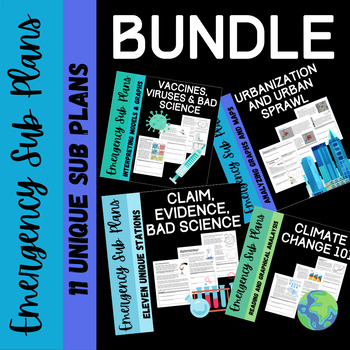
BIOLOGY EMERGENCY SUB PLANS BUNDLE
This bundle of 11 EDITABLE, No-Prep assignment is meant to be completed individually and is perfect for an emergency sub plan in any science class. Each page asks students to analyze text and graphs. Print it out, and you're ready to go.Included in this file is a PDF and a Word document so you can feel free to use "as is" or modify and differentiate to fit your classroom and students' needs. Enjoy!Topics include:Vaccines and Viruses4 Case Studies in Population GeneticsMitosis and CancerAnimal Be
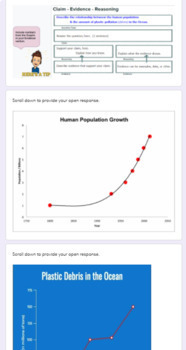
Data Analysis: Human Population Increase & Plastic Pollution CER Open Response
Students identify the pattern between rising human population & increasing plastic pollution rates. Using line graphs, students are guided in describing the relationship between two data sets to describe the negative human impact on ecosystems. A claim - evidence- reasoning (CER) graphic organizer is provided to guide students' writing. Encouraged to incorporate evidence, students are also prompted to think about the importance of each element of the CER writing tool. This activity is chunke
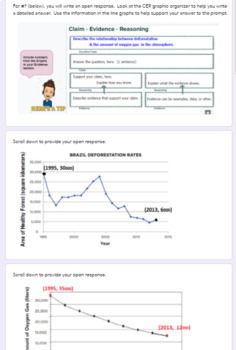
Data Analysis: Deforestation & Oxygen Gas Human Impact CER Open Response
Students identify the pattern between deforestation (decreasing area of forest) & decreasing amount of oxygen gas in the air. Using line graphs, students are guided in describing the relationship between two data sets to describe the negative human impact on ecosystems. A claim - evidence- reasoning (CER) graphic organizer is provided to guide students' writing. Encouraged to incorporate evidence, students are also prompted to think about the importance of each element of the CER writing too

CER Open Response Activity: Analyze & Evaluate Engineers & Biodiversity
In this activity, students investigate how engineers solve problems to protect species. Students use their understanding of biodiversity to evaluate whether a design solution helps or harms ecosystems. Three topics are provided, for student choice. This can be used as a jigsaw activity, or for independent learning. Students are also given the choice of the type of slide they provide their answers on. There are two levels of difficulty of the Claim - Evidence - Reasoning graphic organizer. One ha
Subjects:
Grades:
3rd - 12th, Higher Education, Adult Education, Staff
Types:
NGSS:
MS-ESS3-2
, MS-ESS3-1
, HS-ESS3-3
, 5-ESS3-1
, HS-ESS3-2
...

Teaching Socratic Seminars to Students (SPIDER Style)
If you want to teach your students a fun way of having a deep conversation in class, look no futher! This activiy include a hand out rubric for all stduents to have and follow as well as a power point slide show to explain how a SPIDER or Socratic Seminar work.
Grades:
6th - 12th, Higher Education, Adult Education
Also included in: Thinking Like A Historian Unit

Primary Source Document Analysis Wheel
The Primary Source Document (DBQ) Analysis Wheel graphic organizer can be used with any primary source document at any level of complexity. Using the graphic organizer, students will develop the ability to analyze primary source documents through examination of the author, place and time of its creation, intended audience, reason for its creation, main idea, and significance. Furthermore, students will practice citing evidence from the text of primary source documents to support analysis and con
Grades:
4th - 12th, Higher Education, Adult Education
Types:
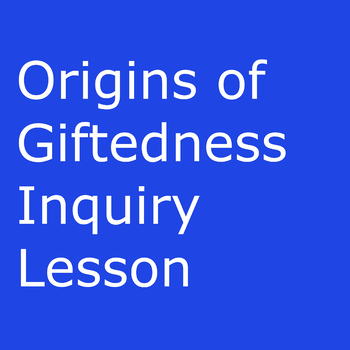
Origins of Giftedness Inquiry Lesson
This inquiry lesson has sixteen secondary sources on the origins of giftedness. Authors are Francis Galton, Lewis Terman, Joseph Renzulli, Howard Gardner, Mihaly Csikszentmihalyi, Robert Sternberg, John Feldhusen, Ellen Winner, Howard Gruber, and Joyce VanTassel-Baska. The lesson starts with a bell ringer. It then asks students to write a hypothesis that they will update with each document. At the end, students write a conclusion on the origins of giftedness.
Subjects:
Grades:
9th - 12th, Higher Education, Adult Education, Staff
Types:
CCSS:
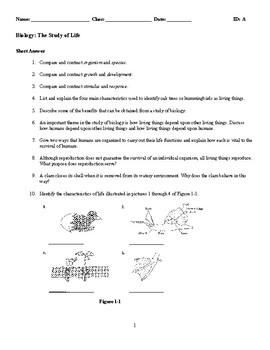
Short Answer - Biology - The Study of Life - Intro
This document contains short answer questions which are great for a test, review, homework, essential questions, daily warm-ups, or class discussion.This Covers -Biology-Organism-Organization-Reproduction-Species-Growth-Development-Environment-Stimulus-Response-Homeostasis-Energy-Adaptation-Evolution-Scientific Methods-Hypothesis -Experiment-Control-Independent Variable-Dependent Variable -Safety Symbol-Date-Theory-Ethics -Technology39 Short Answer Questions with an Answer Key
Grades:
7th - 12th, Higher Education, Adult Education
Types:

What is Giftedness? Inquiry Lesson
This inquiry lesson has nine secondary sources on nine researchers' views on what is giftedness. They are Lewis Terman, Joseph Renzulli, Robert Sternberg, Abraham Tannenbaum, Françoys Gagné, Joyce VanTassel-Baska, and Howard Gardner. This lesson starts out with a bell ringer. Then it asks students to make a hypothesis that they update with each document. At the end, they make a conclusion on what is giftedness.
Subjects:
Grades:
9th - 12th, Higher Education, Adult Education, Staff
Types:
CCSS:

A Problem of Persistence: Polar vs. Nonpolar
This activity requires students to infer the effect of plastics on marine ecosystems and the animals within those ecosystems based on previous knowledge about polar vs. non-polar substances; including the importance of the structure of water. Students also have to answer questions by interpreting graphs from research of surface plastics in the ocean. This is a real-world application of the effects of intra- and intermolecular forces within and between molecules, that requires deep thinking to an
Subjects:
Grades:
10th - 12th, Higher Education
Types:

A Problem of Persistence: Polar vs. Nonpolar
This activity requires students to infer the effect of plastics on marine ecosystems and the animals within those ecosystems based on previous knowledge about polar vs. non-polar substances; including the importance of the structure of water. Students also have to answer questions by interpreting graphs from research of surface plastics in the ocean. This is a real-world application of the effects of intra- and intermolecular forces within and between molecules, that requires deep thinking to an
Subjects:
Grades:
10th - 12th, Higher Education
Types:
Showing 1-11 of 11 results




